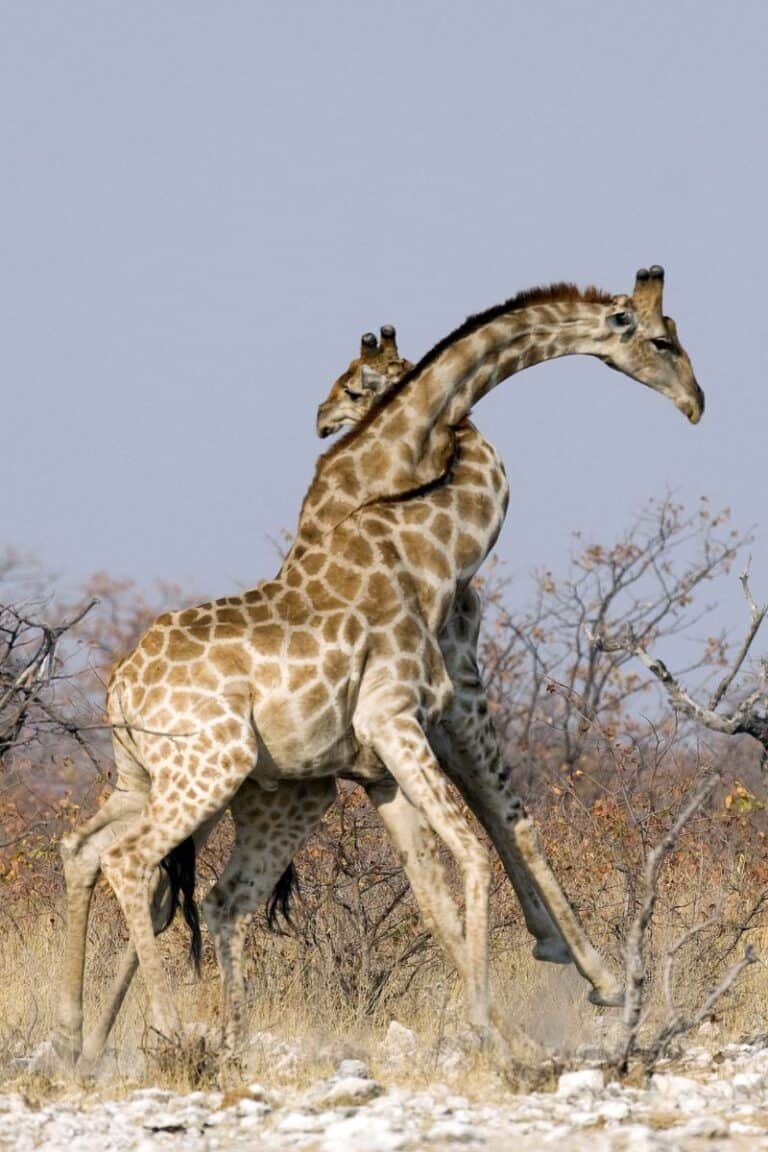
Giraffes are known as gentle giants, but like any wild animal, they have their own set of instincts and behaviors that can make them unpredictable. Even though they’re typically passive, there are situations where a giraffe could pose a risk to humans. Understanding this helps us appreciate both the beauty and the wildness of these creatures. So, can a giraffe truly be dangerous? Here’s what you need to know.
Understanding Giraffe Behavior
To get a grasp on whether giraffes can be dangerous, we first need to understand how they behave. Giraffes are herbivores, primarily feeding on leaves and fruits from tall trees. They spend a lot of their day grazing, which often gives the impression that they’re calm and docile. You might think of them as the gentle giants of the animal kingdom, but there’s more to it.
Giraffes are social animals, often found in groups called herds, which can vary in size. Their social structure is typically relaxed, and they use body language to communicate. This includes necking, where males swing their necks and hit each other—an activity that looks playful but can get fierce. It’s important to understand that while they have a gentle reputation, their behavior can change rapidly if they feel threatened or cornered.
You might wonder how giraffes react to humans in their natural habitat. Generally, they are not aggressive unless provoked. However, if a giraffe perceives you as a threat—especially if it’s a mother with a calf—it might respond defensively. This instinctive reaction is what we need to keep in mind when discussing their potential danger.
Incidents of Aggression
While it’s rare, there are instances where giraffes have shown aggression towards humans. This often occurs in the wild or even in captivity when a giraffe feels cornered or threatened. For example, there have been reports of tourists or safari-goers getting too close to these magnificent creatures, leading to aggressive displays.
One of the most notable behaviors is kicking. Giraffes can deliver powerful kicks using their long legs, which can be seriously injurious to anyone within range. The surprise factor here can be overwhelming. You might be standing peacefully, watching a giraffe, when suddenly it perceives a threat and kicks with great force. It’s a reminder that, regardless of their appearance, wild animals will protect themselves when they feel endangered.
Another area of concern is during mating season. Male giraffes are known to be particularly aggressive towards each other, and this testosterone-fueled behavior can lead to fights. By extension, humans who inadvertently get involved in these interactions could find themselves in a dangerous situation. When in the presence of wild animals, it’s always wise to respect their space.
Giraffes in Captivity
When we think about the risk of giraffes, it’s important to consider their behavior in captivity, like in zoos or wildlife parks. Generally, giraffes raised in these environments are more accustomed to human presence, often leading to a calmer demeanor. However, their wild instincts can still kick in if they feel threatened.
In some cases, caretakers might interact closely with giraffes, feeding them or even providing medical care. While this can seem safe, it always carries risks. A giraffe might not realize that someone means no harm, leading to unexpected reactions. If a giraffe feels anxious or confused, it might swing its neck or kick, possibly injuring someone nearby.
Zoo staff are trained in animal behavior and understand how to interact with these gentle giants without provoking them. It’s fascinating how their training allows them to work closely with animals that could otherwise become aggressive if they felt frightened or cornered. This highlights the importance of knowledgeable care when dealing with wild animals—safety is key!
How to Stay Safe Around Giraffes
If you find yourself in the presence of giraffes, whether in the wild or at a zoo, it’s crucial to maintain a safe distance. Here are some helpful tips to ensure you stay safe while enjoying these incredible creatures:
- Observe from a distance: Keep a respectful distance to allow the giraffes to feel secure. This also helps you avoid any sudden movements that might startle them.
- Follow guidelines: Always listen to the instructions given by guides or zoo staff. They know how to keep both visitors and animals safe.
- Stay calm: If a giraffe appears agitated, stay calm and avoid sudden movements or loud noises that might provoke it.
- Never corner a giraffe: Avoid approaching a giraffe directly, especially if it seems to be in a tense situation or if it’s protecting a calf.
Staying informed about giraffe behavior and the context of your surroundings can help prevent any accidents. Honestly, these practices can make all the difference in having a safe and enjoyable experience.
The Role of Giraffes in Ecosystems
Understanding the potential danger of giraffes to humans highlights a bigger picture—the role giraffes play in their ecosystems. As browsers, they help maintain the health of certain trees and plants, promoting biodiversity. By feeding on leaves high in the canopy, they allow sunlight to reach lower plants, helping them thrive.
Moreover, by spreading seeds through their droppings, giraffes contribute to the growth of new plants. This role is essential in maintaining the balance of their habitats. When we think about the potential danger of giraffes, remember that they are not just massive animals; they are key players in the environmental game.
By respecting and protecting giraffes and their habitats, we help ensure their survival and the health of the ecosystems they inhabit. It brings everything full circle—what might seem dangerous at first glance really contributes to the richness of our natural world.
In conclusion, while giraffes can pose a risk to humans, understanding their behavior helps us navigate our interactions safely. Generally gentle and social, these creatures aren’t looking for trouble, but their instincts can kick in when they feel threatened. By respecting their space and understanding the context of their behavior, we can enjoy the beauty of giraffes without putting ourselves in harm’s way.
Wild animals come with their own sets of rules, and giraffes are no exception. Appreciating them from a distance not only keeps you safe but also allows these graceful giants to thrive in their natural habitat. So next time you see a giraffe, remember: it’s all about respect and understanding. Enjoy the wonder of nature, and stay safe out there!

